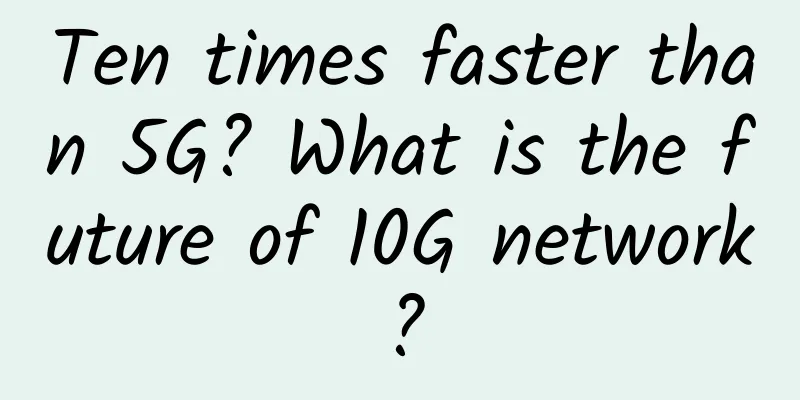Patents and standards proposals complement each other to start the battle for 5G commanding heights

|
Thanks to the contributions of national policies, technology research and development, marketing and other aspects, my country's communications industry has achieved remarkable development. Technology development, standards first, to achieve interconnection, unified communication standards are a prerequisite, once the deployment of patents with exclusive implementation rights under the prevailing technical standards, it is tantamount to having a "toll booth" on the road to industry development. Therefore, the importance of patents to the development of enterprises and even the communications industry is self-evident.
Over the past 20 years, intellectual property rights, especially patents, have demonstrated significant influence on important issues ranging from the independent intellectual property rights and patent risk assessment of the 3G international standard TD-SCDMA, to the development of 4G LTE and the construction of future 5G standards. my country's communication patent application enters the fast lane. The development of the domestic communication industry has experienced a difficult journey from "lagging behind" to "catching up", and then to "shoulder to shoulder" and even "leading". my country began to accept patent applications in 1985, but did not receive communication technology patent applications from domestic applicants until 1997. This first application for a communication patent was the standard framework patent for TD-SCDMA - "Time division duplex synchronous code division multiple access wireless communication system with smart antennas and communication method thereof", which was 8 years behind Qualcomm's 3G underlying technology CDMA-related patent applications that began in 1989. This gap began to narrow in the 4G era. At the 3GPP Quebec meeting in November 2004, 3GPP decided to start a research project on the long-term evolution of 3G systems. Subsequently, starting in 2005, domestic and foreign companies such as Huawei and ZTE began to apply for 4G patents. In the 5G era, as of January 2017, among the more than 1,600 patent applications involving new 5G technologies worldwide, mainland China ranked first in the number of patent applications. In the number of 3GPP-related standard proposals, Huawei, Samsung, Ericsson, Qualcomm and other companies ranked at the forefront. As of the end of March 2017, there were 2.791 million patents related to the global communications industry, of which 532,000 were originally applied for by China. 94% (about 500,000) of these 532,000 patents were applied for in the past 10 years, and the number of applications since 2012 accounted for 64.3% of the total (about 342,000). It is worth mentioning that Huawei, a backbone enterprise in my country's communications industry, applied for 4,906 patents in 2016, ranking first among applicants in various industries nationwide. Among the top ten companies in China in terms of the number of invention patent applications accepted in 2016, 7 were ICT-related companies (the other 6 were: LeTV, ZTE, Oppo Communications, BOE, Xiaomi, and Nubia). Domestic manufacturers increase investment in 5G R&D. General Secretary Xi Jinping pointed out at the "2016 National Science and Technology Innovation Conference" that after more than 30 years of efforts since the reform and opening up, my country's total economic output has jumped to second place in the world. At the same time, my country's long-term reliance on resources, capital, labor and other factors to support economic growth and scale expansion is no longer sustainable. Instead, it needs to rely on more and better scientific and technological innovation to inject new impetus into economic development. As the engine of the digital economy era, the ICT industry shoulders a more important responsibility. In the competition for communication patents, we should recognize the achievements we have made, but we should also be aware that the advantages of China's traditional industries lie in the investment of low-cost resources and human factors. Some domestic communication companies started late in implementing patent strategies, and there is a certain degree of disconnection between relevant patents and technical standards. Therefore, domestic communication companies still have great development potential in the necessary patents of existing standards. Nowadays, many large enterprises are paying more and more attention to patents. Taking 5G as an example, domestic communication operators, equipment manufacturers, and scientific research institutions have increased their investment, invested heavily in 5G technology research and development, standard setting and other fields, and continuously strengthened cooperation among enterprises. For example, Huawei has clearly stated that it will invest $600 million in 5G research and innovation before 2018, ranking first among global communication manufacturers in terms of investment amount, and Huawei has made substantial progress in 5G network architecture, spectrum use, air interface technology, base station implementation and other fields; ZTE, as one of the main participants in 5G global technology and standard research activities, serves as the chairman of the IMT-2020 IEEE working group and other important roles, and has also made a lot of investment in 5G research and development; Datang Telecom is the core force of the frequency working group, demand working group, and technical working group in the domestic IMT-2020 (5G) promotion group, responsible for multiple technical research topics. However, it is worth noting that domestic enterprises have a weak foundation in the crucial 5G high-frequency band communication technology, especially the lack of research and development results in components and chips, and no domestic enterprises have yet involved in the pre-beamforming scanning and directional technology actively researched by foreign manufacturers (such as Qualcomm). The full-duplex technology that domestic enterprises once focused on and invested in is currently difficult to be applied in 5G due to the large difference in power between receiving and sending signals, and the problem of self-interference when the technology is applied. Patents and standard proposals work together to compete for the commanding heights of the 5G industry. 5G is the most important growth engine for the future communications industry. As the commercialization of 5G approaches, the communications industry is increasingly enthusiastic about 5G, and it is foreseeable that this enthusiasm will continue in the next few years. "Here are stones from other mountains that can polish jade." Before discussing how my country's ICT industry should conduct 5G patent layout, we can first understand the practices of foreign ICT "giants". In March 2017, Ericsson took the lead in announcing the 5G patent licensing rate, planning to set the patent licensing fee for high-end handheld devices at $5 per device, and for low-end handheld devices, the licensing fee will reach $2.5 per device. This move reminds us of the time when Nokia sold its mobile phone division to Microsoft in 2013, and domestic mobile phone manufacturers were very worried that Nokia would use this opportunity to increase the patent licensing rate. Because a survey on the profit margin of domestic mobile phones showed that the profit of a thousand-yuan Android smartphone was only a few yuan at that time. Now Ericsson has clearly set a high price for 5G patents. Once this rate is implemented in the future, it will put a lot of pressure on domestic mobile phones. Where does Ericsson get the confidence to charge high patent licensing fees? We may find some answers from Ericsson's patent layout strategy of "preparing for a rainy day". Ericsson's 5G development strategy focuses on the evolution of 4G standards, hoping to extend its currently dominant 4G technology to 5G. As a long-established communications company with a 140-year history, Ericsson has extensive experience in combining communications standards with patents. For example, for the channel status information (CSI) feedback technology, Ericsson submitted the R1-164955 proposal at the 3GPP TSG RAN WG1 meeting held in May 2016, which was about channel acquisition based on the reciprocity of SRS (Sounding Reference Signals). Ericsson deployed PCT patents - WO2011132100A1 and WO2013119166A1 - in conjunction with this standard proposal. Other proposals R1-167467, R1-167468, and R1-167469 involving reference signal pilot design deploy PCT patents WO2013046063A1 and WO2012153204A1; proposals R1-164957 and R1-167466 involving beamforming deploy PCT patent WO2016064318A1. From the above analysis, it can be seen that these standard proposals were submitted in 2016, but Ericsson had already started relevant patent layout as early as 2011. Similarly, in terms of 5G technology patents, Qualcomm has also attracted much attention. It is not difficult to find that Qualcomm has invested in R&D in many key 5G technologies. For example, in the field of new multi-carrier technology, Qualcomm proposed WOLA (i.e. windowed OFDM technology), which is also the multi-carrier technology it promoted in the 3GPP meeting; in terms of low-latency technology for the Internet of Things, an important application of 5G, Qualcomm mainly promotes RSMA multiple access technology based on its own traditional technology CDMA. It is worth noting that Qualcomm attaches great importance to the coordination of patents and standard proposals in the field of channel state information and its feedback in the field of massive antenna technology, beam tracking and beam switching technology in high-frequency band communications. For example, the standard proposals R1-168054 and R1-168186 involving periodic and semi-static CSI deploy PCT patent application WO2015176266A1 "Method for implementing wireless communication of base stations", which configures different MIMO parameters for user equipment for periodic and non-periodic CSI feedback, forming potential standard essential patents. It can be seen from the examples listed above that the "battle" to seize the commanding heights of the 5G industry through the coordination of patents and standard proposals has begun and is very complex. In view of the current situation of 5G technology research and development and standard proposals, the author has the following suggestions for the patent layout of the domestic industry.
|
<<: WOT Boco Nie Xiaoyun: WLAN network capacity performance design and optimization
>>: Don’t just focus on SD-WAN, pay attention to IPv6
Recommend
5 predictions for 5G adoption in 2021 and beyond
If we roll up some of the predictions about the f...
edgeNAT newly launched US CUVIP 100M unlimited traffic VPS, 30% off for monthly payment and 40% off for annual payment
edgeNAT launched a new US CUVIP line VPS this mon...
Huawei Cloud builds EI intelligent body to promote the evolution of "inclusive AI"
[51CTO.com original article] There is no doubt th...
Cisco released the IT Operations Readiness Index report, and Chinese enterprises' IT operations provide more value to their businesses
[Original article from 51CTO.com] Cisco recently ...
Various abnormal phenomena and analysis from TCP protocol to TCP communication (Part 1)
Many people always think that learning TCP/IP pro...
If you don't even know how to attack and defend a switch, what's the point of being a network engineer?
Why should we care about switch security??? Verti...
Qianjia Viewpoint | Simplifying Smart Cities
Challenges facing smart cities When designing a s...
11 key visualizations for SD-WAN success
SD-WAN deployments are quickly becoming a major f...
Knowledge Popularization | 7 Deployment Solutions for 5G Private Networks
[[315546]] What is 5G private network? 5G private...
HostKvm: $6.8/month KVM-2G memory/40G hard disk/500GB monthly traffic/available in Korea, Russia, and Australia
How about HostKvm? HostKvm is a Chinese hosting c...
6 considerations for new IT leaders in digital transformation
[[397841]] The journey of digital transformation ...
Space Data-as-a-Service Ready to Take Off
【51CTO.com Quick Translation】The upcoming commerc...
Why does 5G require huge investment, but the final experience feels not much different from 4G?
Many people say that the reason why 5G is not ver...
Will 5G slicing turn operators into "patchers"? Here's how operator experts interpret it
Topic fuse: What is network slicing? This new con...
Sharktech: Los Angeles high-defense servers starting at $59/month, 1Gbps unlimited traffic
Sharing information about several high-defense se...









